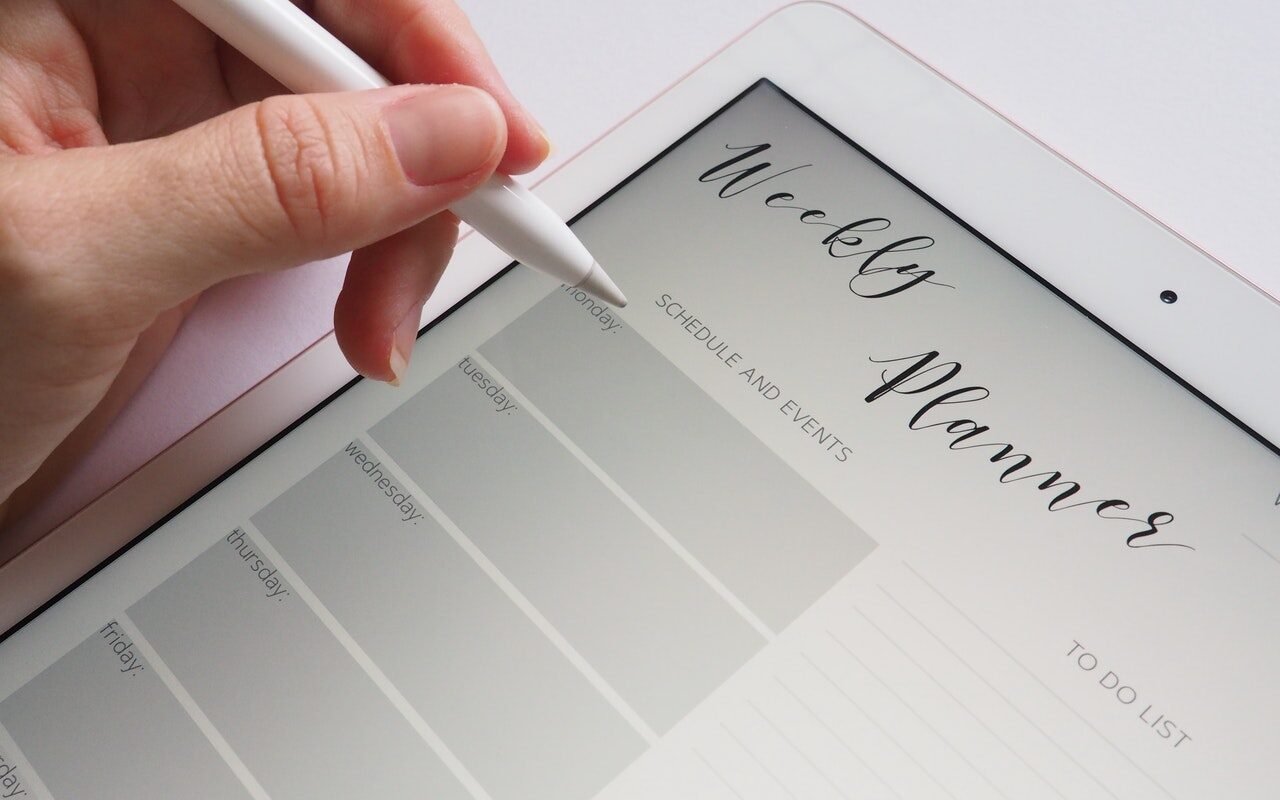Are depression or anxiety making you feel like your days are just floating by and you have no control of them? Many people suffering from depression or anxiety find that they either have nothing planned and thus get nothing done, or try to overload their day and get angry with themselves when they can’t complete the numerous tasks they set for themselves.
Setting a schedule will help you plan what you need to do that day. Not only that, but setting a schedule puts you in control and many people find that comforting. We’ll show you some examples of effective scheduling and will tell you the pros and cons of each.
Remember to try your best to stick to the schedule, but don’t go overboard or get angry if you don’t meet every task or goal. Do your best, but don’t let your plan stress you out. This is supposed to help, not make your day even harder. Have some compassion, be realistic about what you can accomplish, and let’s go over some basic daily schedule templates for depression and anxiety (or anyone else who wants to set a schedule).
Basic Schedule
This is the most basic schedule I can think of and it’s good if you’re just starting out or unsure of what you want to do in the day. The point of this schedule is that it’s very easy. There aren’t any self-measurements (though one section asks how the activity felt, self-reflection is always good!) and there should only be a few sections here so that you don’t overwhelm yourself with tasks.
You’ll also find this helpful if you have difficulty getting much accomplished during the day. This can be used to slowly add more tasks to your do as you get more comfortable and capable.
| Time | Activity | Actual Activity | How it felt |
| Early Morning | Took 20 minute walk | (as planned) | Felt good to see the sunrise |
| Early Afternoon | |||
| Late Afternoon | |||
| Evening |
This is meant to be a small, basic schedule with only a few slots. You can add or remove slots as needed, but this is best to be kept small and simple. You should only plan one or two activities per time slot. More than that can be difficult.
For the “Actual Activity” slot you’ll write what actually happened. You can write (as planned) if it went as you planned. This will help you see how well you can stick to the schedule. You’ll also want to describe how the activity made you feel.
Feelings Schedule
This schedule is similar to the basic one above, but there is more emphasis on your feelings and triggers. This is best used if you’re trying to better gauge your mood throughout the day or discover your triggers. This will look similar to the basic schedule but with a few additions.
| Time | Activity | Actual Activity | Rate Mood (1-5 with 1 being low and 5 being good) | Triggers, thoughts, or events that affected mood |
| Time Slot 1 | Meditate for 30 minutes | Could only do 10 minutes | 2 | Angry, feel like I never finish anything |
| Time Slot 2 | ||||
| Time Slot 3 | ||||
| Time Slot 4 |
I decided to give a more negative example so you can see how things go if you’re not perfect. It’s OK if you can’t stick to your ideal schedule. But as you can see in this example, the person is feeling angry because they believe they never finish anything. That’s a trigger to be aware of. That’s why rating your mood and thoughts can be so important.
Productivity
Alright, you’ve decided that you can get more done in the day. Great! There’s nothing wrong with getting more done as long as you can be patient with yourself, especially if things don’t go the way you like.
This schedule is better for those who are already getting a good amount done in the day and want to do more. This works much better with minor cases of anxiety and depression. If your case is worse or you already struggle getting anything done during the day, then I urge you to use the Basic Schedule or Feelings Schedule.
| Time | Activity | Actual Activity | How it felt |
| 7-8am | Wake up, shower, eat breakfast | As planned, also walked dog | Felt good, but a little rushed |
| 8-9am | |||
| 9-10am | |||
| 10-11am | |||
| 11-12pm | |||
| 12-1pm | |||
| 1-2pm | |||
| 2-3pm | |||
| 3-4pm | |||
| 4-5pm | |||
| 5-6pm | |||
| 6-7pm | |||
| 7-8pm |
As you can see there are many more time slots here. You don’t have to do every hour, but the point is being as specific as possible about the time. This will ensure you know what you should be doing depending on the time of day.
This is good if you want to get more done during the day, but don’t think that every slot has to be productive. You can eat dinner and relax for two or three hours. You can meditate or play a video game. You can use a whole hour as free time to do whatever you want.
It’s dangerous to overload yourself, so don’t go overboard and make every hour about a different project.
Tips for Schedule Making
It can be difficult to think of ways to fill all those time slots in your schedule. Once again, the problem here for many people is either too much or not enough. Let’s start slow and only put what NEEDS to get done, not what you WANT to get done. Some essential activities might include:
- Eating (yes, for some people scheduling it makes it easier to adhere to)
- Showering
- Work or similar activities
- Taking medication
- Any appointments
After this you can see how much time is left. Now you can start adding what you want to do. Some people feel that they need to fill the remaining blocks with super-productive tasks like finishing that book you always wanted to write, running a mile, or starting a business. That’s great! But, only if you can realistically do it.
It’s important to be realistic about what you can and can’t do in a day. Maybe schedule a small part of your day for something productive and then allow the rest of the day be for rest and relaxation. Relaxation is essential for mental health. So don’t feel bad about scheduling yourself for an hour or two of playing video games, watching TV, or doing anything else that someone else might call “being lazy.” There’s nothing wrong with having fun, and besides, it’s good for you when done in moderation.
Final Thoughts
We just went over a few daily schedule templates. Did you find one you like? Remember that these are only suggestions. You can change them around if you’d like, especially if you have a counselor and they want you to record something else. Schedules are supposed to make you feel more in control of your day. Keep that in mind and know that it’s OK if things don’t go as planned.
Let us know what you think and tell us if you have ideas for other schedule templates. We might add them here!


